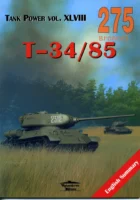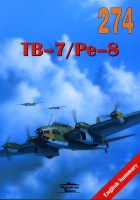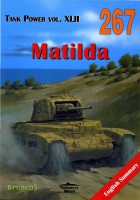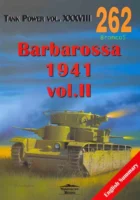Signed documentation Wydawnictwo Militaria the book "Char T-34/85 - Wydawnictwo 275" .
The T-34 was a medium tank that entered service in 1940 with the Red Army. At the time, it was a remarkable balance between the three major factors that defined the quality of an armoured vehicle: firepower, protection and mobility. This success made it one of the Soviet Union's strengths in the face of the invasion of the Wehrmacht. In order to counter it, it will have to revise its armoured design policy by developing, for example, the Panzer-V 'Panther', which borrowed some of its technical features from the T-34. Although quickly surpassed by foreign production, the T-34 remained in production from 1940 to 1958, with a total of units produced estimated at 84,070, making it the second most produced tank of all time, just behind its successors, the T-54 and T-55.
Descended from the BT fast tanks designed by I. Kochkin's team in Kharkov, the T-34 introduced many technological innovations, such as the use of an aluminum alloy diesel engine, wide tracks, and sloping armour plates around the edge. It was not free of defects, moreover, with for example its two-seat turret and its lack of transmission equipment, which made its tactical use quite primary, and caused many losses, but also a questionable mechanical reliability. But like its American counterpart, the Sherman M4, it showed a certain capacity for evolution, and above all a ease of construction that made it available in very large numbers, which ensured an exceptional longevity, 27 countries still using it in 1996. His influence on the development of battle tanks was also certain, as he is often considered one of the tanks used to define the concept of the main battle tank.
Source: Wikipedia









